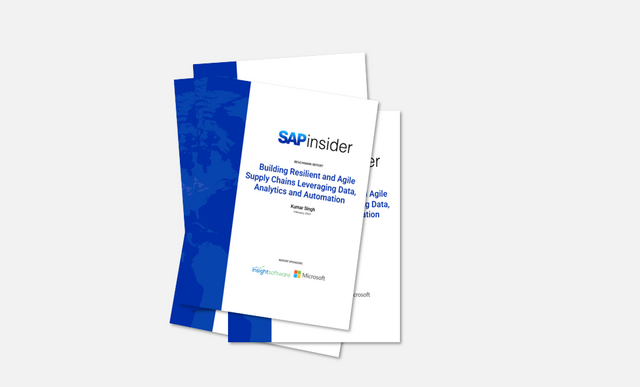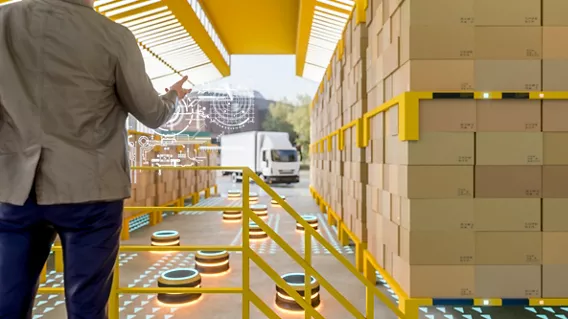How Suntory Reinvented Its Supply Chain with DXC and SAP
Meet the Authors
Key Takeaways
⇨ Suntory Oceania successfully integrated a new $400 million production facility with its existing SAP S/4HANA system by managing a complex, phased approach that aligned technology rollouts with physical construction, minimizing risk and building momentum.
⇨ The project's success highlights the importance of deep integration with automation in modern supply chains, requiring professionals to effectively configure SAP modules while ensuring seamless communication with diverse automation technologies.
⇨ Suntory's transformation strategy emphasizes the need for a unified global SAP platform to streamline processes and facilitate global scalability, positioning the organization for future innovations and creating opportunities for talent development.
A resilient and agile supply chain is a necessity in a highly competitive market like the Asia Pacific. Suntory Oceania, a major player in the region’s beverage industry, faced a monumental supply chain challenge. The company aimed to launch a new, state-of-the-art production facility valued at more than $400 million in Queensland, Australia, and integrate it seamlessly with the company’s existing SAP S/4HANA system.
During a panel session at the SAP Now AI Tour in Melbourne on August 7, Dee Lucero, SAP Practice Leader at DXC Technology, and Cathy Addison, Digital & IT Head of Solutions Supply Chain at Suntory Oceania, shared insights on this transformation. They showcased the power of partnership and the potential of a unified, intelligent supply chain.
The Challenge
According to Addison, Suntory wanted to create a digitally integrated facility that would set a new standard for efficiency and automation. The core task was to integrate the company’s existing SAP S/4HANA system into the new, highly automated facility, a significant undertaking that had to be completed in parallel with the physical construction.
Explore related questions
Addison noted that the project involved automation with a host of systems, from Roll-On Roll-Off (RORO) docks for automated receipting to a Line Management System (LMS) for automated picking and stock transfer into SAP.
The transition also required a shift from discrete manufacturing to SAP Production Planning for Process Industries (PP-PI) to align with Suntory’s new operational model. The integration of an Automated Storage and Retrieval System (ASRS) via SAP Cloud Platform Integration, along with the introduction of new modules such as SAP QM for quality management and SAP Plant Maintenance, added to the complexity.
DXC Technology and Suntory tackled the project in manageable stages, starting with goods receipting, then manufacturing, and finally, alcohol delivery, ensuring the technology rollout was perfectly synchronised with the plant’s commissioning.
A Unified Platform
“The collaboration between Suntory, DXC, and SAP was pivotal for the success of this project,” Lucero noted. DXC’s expertise was instrumental in integrating a suite of SAP solutions, including SAP Extended Warehouse Management (EWM), which now serves as the backbone of Suntory’s streamlined operations. According to Lucero, the goal was to consolidate operations into a single core SAP system, enhancing efficiency and providing a foundation for long-term scalability.
Addison explained that this transformation is a key part of a broader, business-led strategy to align operations across seven business units. “Our goal is to move to a single global SAP platform and a single instance that allows us to streamline processes and operate from one consistent system,” she said.
The results speak for themselves. Suntory now possesses a modern, integrated IT landscape that paves the way for future innovations like SAP Fiori Apps and advanced analytics and AI capabilities. While hard metrics are still emerging from this implementation, the qualitative benefits include smarter, faster, and more connected decision-making across the entire business.
What This Means for Mastering SAP Insiders
For Mastering SAP Insiders, Suntory’s case offers some key learnings in the supply chain space:
- Master parallel and phased integrations. The Suntory project was not a simple, sequential implementation; it was a complex one that ran in parallel with the construction of a $400 million facility. For Mastering SAP Insiders, this underscores the growing need to manage technology rollouts alongside major physical and operational changes. A phased approach like the one adopted by Suntory and DXC minimises risk and allows teams to build momentum. Thus, move beyond traditional project management and embrace dynamic, parallel workstreams that synchronise the digital and physical worlds.
- Deep integration with automation is the new standard. Modern supply chains are driven by automation, and this case study is a prime example. The real value was unlocked by tightly integrating SAP EWM and SAP PP-PI with a suite of sophisticated automation systems, including roll-on roll-off docks, line management systems, and automated storage retrieval systems. For SAP supply chain professionals, this means proficiency is a combination of configuring SAP modules and understanding how to make SAP the intelligent core that communicates seamlessly with diverse, third-party automation technologies.
- Build for a unified global platform. The technical implementation at Suntory serves a larger strategic purpose of moving towards a single global SAP platform soon. This vision aims to streamline processes, create a consistent way of working across all regions, and simplify support services. Having a unified system provides a consistent foundation for global scalability and innovation. It positions the organisation to easily implement advanced functionalities like SAP Fiori Apps, AI capabilities, and advanced analytics. The lesson here for Mastering SAP Insiders is to think beyond the immediate project scope and design solutions that contribute to a long-term, global, and standardised IT landscape. This not only drives efficiency but also creates global opportunities for talent within the organisation.





